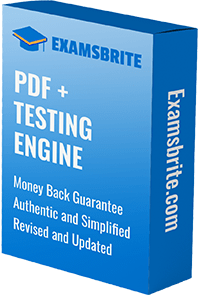| Explaining application network basics |
|
- Explain MuleSoft’s proposal for closing the IT delivery gap.
- Describe the role and characteristics of the “modern API.”
- Describe the purpose and roles of a Center for Enablement (C4E).
- Define and describe the benefits of API-led connectivity and application networks.
- Define and correctly use the terms API, API implementation, API interface, API consumer, and API invocation.
- Describe the basics of the HTTP protocol and the characteristics of requests and responses.
- Describe the capabilities and high-level components of Anypoint Platform for the API lifecycle
|
| Designing and consuming APIs |
|
- Describe the lifecycle of the “modern API.”
- Use RAML to define API resources, nested resources, and methods.
- Identify when and how to define query parameters vs URI parameters.
- Use RAML to define API parameters, requests, and responses.
- Use RAML to define reusable data types and format-independent examples.
- Read a RAML spec and formulate RESTful requests with query parameters and/or headers as appropriate.
|
| Accessing and modifying Mule messages |
|
- Describe the Mule message data structure.
- Use transformers to set message payloads, message properties, and flow variables.
- Write MEL expressions to access and modify message payloads, message properties, and flow variables.
- Enrich Mule messages using the Message Enricher.
|
| Structuring Mule applications |
|
- Parameterize an application using property placeholders.
- Define and reuse global configurations in an application.
- Break an application into multiple flows using private flows, subflows, and the Flow Reference component.
- Specify what data (payload, message properties, flow variables) is persisted between flows when a Flow Reference is used.
- Specify what data (payload, message properties, flow variables) is persisted between flows when a Mule message crosses a transport boundary.
- Specify what data (payload, message properties, flow variables) exists in a flow before and after a call in the middle of a flow to an external resource.
|
| Building API implementation interfaces |
|
- Manually create a RESTful interface for a Mule application.
- Describe the features and benefits of APIkit.
- Use APIkit to create implementation flows from a RAML file.
- Describe how requests are routed through flows generated by APIkit.
|
| Building API implementation interfaces |
|
- Manually create a RESTful interface for a Mule application.
- Describe the features and benefits of APIkit.
- Use APIkit to create implementation flows from a RAML file.
- Describe how requests are routed through flows generated by APIkit.
|
| Handling errors |
|
- Describe the default exception strategy in a Mule application.
- Define a custom global default exception strategy for an application and identify in what situations it will be used.
- Define exception strategies for flows.
- Combine multiple catch exception strategies in a choice exception strategy.
|
| Transforming data with DataWeave |
|
- Write DataWeave scripts to convert JSON, XML, and Java data structures to different data structures and data types.
- Use DataWeave operators.
- Define and use custom data types.
- Apply correct DataWeave syntax to coerce data types.
- Apply correct DataWeave syntax to format strings, numbers, and dates.
- Call Mule flows from a DataWeave script.
- Call global MEL functions from a DataWeave script.
|
| Using Connectors |
|
- Retrieve data from a Database using the Database connector.
- Retrieve data from a REST service using HTTP Request.
- Use a Web Service Consumer connector to consume SOAP web services.
- Use the Transform Message component to pass arguments to a SOAP web service.
- List, read, and write local files using the File connector.
- List, read, and write remote files using the FTP connector.
- Use the JMS connector to publish and listen for JMS messages.
|
| Processing records |
|
- List and compare and contrast the methods for processing individual records in a collection.
- Explain how Mule messages are processed by the Foreach scope.
- Use the Foreach scope to process records.
- Explain how Mule messages are processed in a Batch job.
- Use a Batch element with Batch Steps, Batch Filters, and a Batch Commit to process records.
- Use the Poll component to trigger a flow.
- Describe the features, benefits, and process to use watermarking.
- Configure watermarks in the Poll scope.
- Persist data between flow executions using the Object Store.
|
| Debugging and troubleshooting Mule applications |
|
- Use breakpoints to inspect a Mule message during runtime.
- Install missing dependencies and drivers to a Mule project.
- Read and decipher Mule log error messages.
|
| Deploying and managing APIs and integrations |
|
- Package Mule applications for deployment.
- Deploy applications to CloudHub.
- Use CloudHub properties to ensure deployment success.
- Create and deploy API proxies.
- Connect an API implementation to API Manager using autodiscovery.
- Use policies, including client ID enforcement, to secure an API.
- Create SLA tiers and apply SLA based policies.
|



